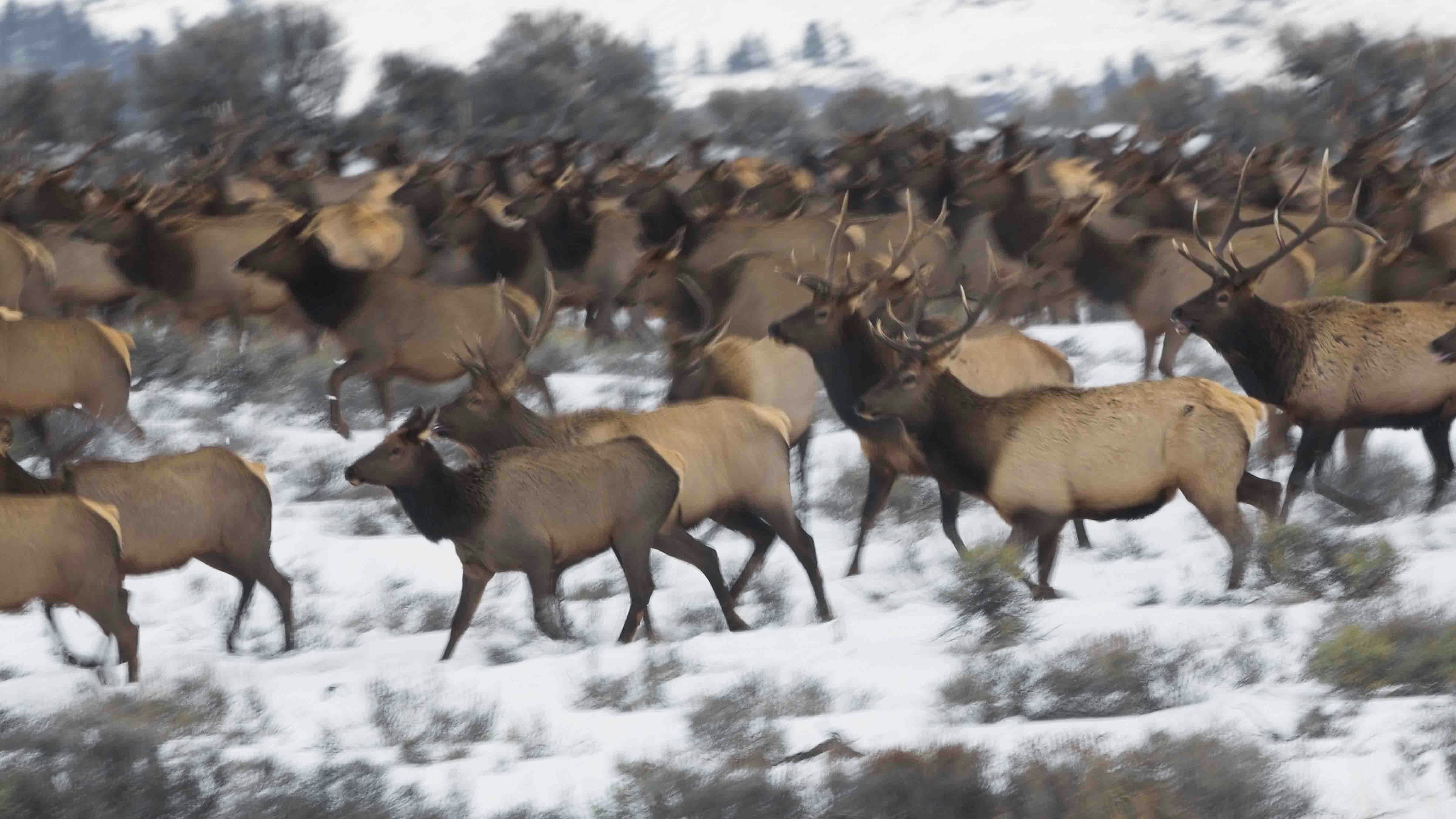As with other wildlife across Wyoming and the region, elk are lagging behind their typical schedule filling up the National Elk Refuge near Jackson because of light snow and warm weather.
But that will likely change, perhaps as soon as late next week, said Cowboy State Daily meteorologist Don Day.
“This is going to be a little bit of a shock to the system,” Day said about plunging temperatures and increasing snowfall expected to roll into the region.
Meanwhile, a warm December and light snowfall so far this season has put elk about two weeks behind schedule filtering into the refuge, public affairs officer Raena Parsons told Cowboy State Daily.
On Friday, there were roughly 3,000 elk on the southern end of the refuge, compared to about 5,900 this time last year.
During the typical peak period in January and February, roughly 8,000 elk hole up on the refuge, which is managed by the U.S. Fish and Wildlife Service.
Snow Pushes The Elk In
As of Dec. 27, there was about an inch of snow at the refuge headquarters, roughly 6 inches less than average, Parsons said.
Most of the elk that winter on the refuge come “a short distance” from the high country in Grand Teton National Park and the Bridger-Teton National Forest, she said.
The wapiti are prompted to move into the refuge by snowpack burying forage in those areas.
“The elk usually move in mid-December,” but that didn’t happen this year because of warm weather and a lack of snow, Parsons said, adding that the elk still have plentiful forage on open ground.
That likely won’t last, Day said. A mass of arctic air is expected to roll in, probably late next week or next weekend.
It should bring snow to the mountains in the Jackson area, and enough of it to push the elk toward the refuge, he said.
“The frequency of snow in the mountains is going to go way up,” he said. “The next couple of weeks should be very productive in the high country. I don’t see one big storm happening, but rather a lot of smaller ones that are going to add up.”
Elk Feeding Might Start Late
The elk on the refuge typically get supplemental feeding during the winter, which usually starts in late January, Parsons said.
But with an abundance of natural forage still on open ground in the refuge, the feeding, like the elk migration, could be a couple of weeks behind schedule this year.
Birds Could Start Piling Into Wyoming
Meanwhile, bird migrations that have been delayed by the unusually warm weather could kick into high gear as well, Day said.
Wyoming isn’t the only place that will get blasted by cold air in the coming days, he said. Many of the birds Wyomingites are used to seeing by now, but haven’t been showing up, are holed up in central and western Canada.
Conditions there were also mild during December, he said. But, as with Wyoming, things are about to get frigid in those parts of Canada, which should get the tardy birds moving south.
That’s good news for late-season waterfowl hunters in Wyoming. Like other bird species, ducks and Canada geese have been hanging out unusually late in the north country making for a slow waterfowl season.
Many seasons are closing soon, but some hunts for Canada geese will remain open into February in Wyoming. And as northern waters freeze up, the honkers will have no choice but to move, Day said.
“The goose hunters should be happy with coming change in the weather,” he said.
Mark Heinz can be reached at mark@cowboystatedaily.com.





